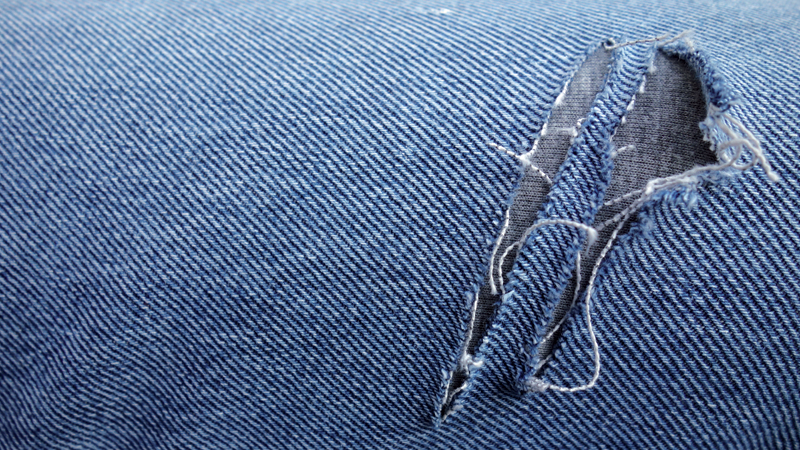The report „EU exports of used textiles in Europe‘s circular economy“ shows that the figures are unclear, as is the fate of many of the used textiles.
There is a large global market for used textiles. A significant amount of unsorted material collected from EU countries is sent to Eastern Europe for sorting and then exported to various countries in Africa and Asia for reuse or recycling. These exports facilitate reuse and recycling and should therefore help to improve the circularity of textiles. However, there are concerns that these exported used textiles could have a negative impact on the environment, climate and socio-economics in the receiving countries. The EU stipulation for the separate collection of textile waste by 2025 is expected to increase the volume of used textiles and exports, which calls for a better understanding of the potential challenges associated with this practise. The report examined the volumes of used textiles that were exported, where they were exported to, and the impacts this had on the main recipient countries. Exported used textiles can be divided into two categories: ‚worn textiles and clothing‘ which are fit for reuse, and ‚sorted and unsorted used rags and textile waste‘. The report notes that there is no code for textile waste, but as a rule of thumb, material belonging to the second category can usually be considered waste.
The amount of used textiles exported from the EU 28 increased from 550,000 tonnes in the year 2000 to 1.7 million tonnes in 2019. The market value used to be in line with the increasing volume, but has started to fall behind over the past 20 years. These figures do not, however, show the reason for this downward price trend. And despite falling prices, the volume of exports continues to grow, suggesting that there is still a demand for used textiles. However, the report stresses that the classification does not necessarily describe the true state of what is exported. Since 2000, the EU‘s share of textile exports has been on a steady decline, falling from 45 per cent in 2000 to less than 35 per cent in 2019, with Asia now taking over as the dominant exporting region. Except for Germany, all top five exporting countries are from other parts of the world. Some EU countries export more than others. Over the last 20 years, 75 per cent of materials came from just five countries. Between 2000 and 2010, the EU’s largest exporters were Germany, the Netherlands, Belgium, Italy and the United Kingdom. In 2019, Germany‘s share increased and Poland and Lithuania replaced Belgium and the UK in the top five. As the report goes on to explain, the five EU textile hubs Belgium, Germany, Italy, the Netherlands and Poland have different export profiles. Germany‘s top five export destinations are other EU countries. The Netherlands exports mainly to Belgium and Germany within the EU, and to Cameroon, Pakistan, and Tunisia outside of the EU. The top five export destinations of Belgium, Italy and Poland are located outside the EU.
Africa has been the main recipient of used textiles from the EU for most of the last two decades. In 2019, however, Asia‘s share of imports almost matched those of Africa. About 10 per cent of the material goes to European countries outside the EU. The Americas and Oceania import between 0 and 2 per cent. The trend towards Asia also becomes apparent when looking at the top 10 importing countries. Between 2000 and 2019, Africa‘s share of imports fell from 63 to 46 per cent. At the same time, Asia‘s share increased from 26 to 41 per cent. According to the report, used textiles exported to Africa are mainly reused locally, where there appears to be a demand for cheap used clothing from Europe. Material that is not suitable for reuse usually ends up in open dumps and informal waste streams. A ban on the import of used textiles is being discussed in some African countries with the aim of protecting and supporting the local textile industry. This leads to the conclusion that imports do have a social and environmental impact. In Asia, most of the material is sorted and processed in so-called economic zones. Most of the material seems to be recycled locally or exported to other Asian countries or to Africa. Overall, there are many uncertainties surrounding the export of used textiles. The types and quality of the exported textiles are essentially unclear. There is a lack of data regarding the quantities and locations of used textiles and textile waste in Europe. The report also notes that the destination of imported textiles does not seem to be included in the commodity codes for textile export. Reusing and recycling textiles has significant environmental benefits as it offsets the production of new goods.
However, as far as exporting used textiles is concerned, the environmental benefits depend on whether their export actually replaces the production of new textiles or fibres. The quality of some of the used textiles exported from the EU is too low to be reused, or at least not for a very long period of time, and they end up as waste, which does not necessarily replace the production of new clothing. From an environmental perspective, these materials should not have been exported in the first place. In conclusion, the fate of used textiles exported from the EU is very uncertain. The widespread public perception of used clothing donations as generous gifts to the needy does not quite reflect reality. Instead, used clothing is increasingly becoming part of a specialised global commodity value chain.










